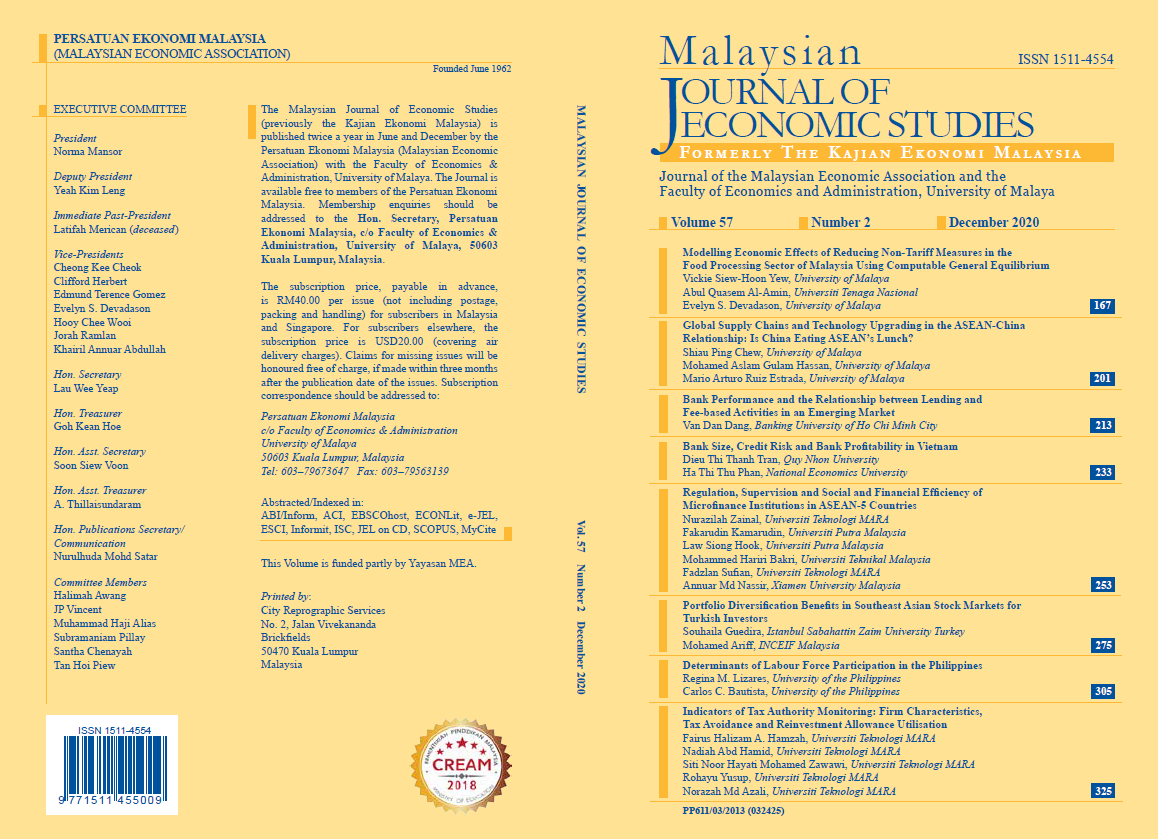Global Supply Chains and Technology Upgrading in the ASEAN-China Relationship: Is China Eating ASEAN’s Lunch?
DOI:
https://doi.org/10.22452/MJES.vol57no2.2Keywords:
ASEAN, China, supply chains, technological capability, value-addedAbstract
While Asia’s economic growth has been defined by technological advances, China stands out in its proactive role of the state and its dominance of global supply chains. As China strengthens its technological capability, this dominance is also translating into the country capturing more value added. This has implications for other participants of its supply chains in terms of intermediate inputs and value addition of supply chain activities. Revealed comparative advantage indicators reveal that the Association of Southeast Asian Nations’ (ASEAN) middle-income countries are no match for China’s technological prowess. ASEAN’s domestic contribution to value added has also not gained much over the years, while a rising share of Chinese inputs among intermediate goods imports embodied in ASEAN’s exports has seen China displacing other import sources. The growing importance of Chinese inputs suggests not only China’s ability to take over an increasing part of supply chains in this region but also raises the possibility that it is able to establish its own supply chains that are linked to Southeast Asia. Whether ASEAN countries are able to capture more value added will depend on their ability to advance their technological capabilities.

